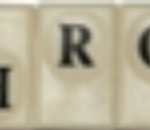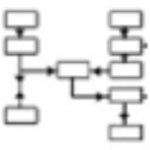What Are Classroom Assessments?
Classroom assessments help teachers determine what students are learning in the classroom and how well they are learning it.
Classroom assessments generally take one of two forms: formative or summative. These two forms of assessment serve different purposes.
Formative assessments are used as comprehension checks. They are usually not weighted or carry very little weight in terms of grading. Formative assessments inform the teacher’s instruction and guide what might need to be retaught. They also provide feedback to students, letting them know how well they have mastered the material.
Summative assessments are what most of us think of when we hear “assessment.” They generally come at the end of a unit or a term; they are often comprehensive and have an impact on students’ grades. Summative assessments determine how well the students have mastered the materials or skills by comparing the assessment results against pre-determined standards or benchmarks.
Multiple levels of assessment are the use of multiple indicators or sources of evidence of student learning. Thus, instead of relying on only one or a few traditional pen-and-paper tests, such as a midterm and a final exam, the instructor might elect to base the students’ grades on a test, a term paper, and a class project which they complete in small groups and present to the whole class.
Diversifying the assessments by which students are judged allows for the students’ diverse abilities and aptitudes to be incorporated into the learning process. Students who may not do well on more traditional-style exams might perform brilliantly on a collaborative project. Multiple measures of assessment allow for a far greater range of evidence of learning, so choosing to use this approach to assessment provides a richer and more detailed picture of student success.
There are several helpful principles for how to make your classroom assessments more accessible for all types of learners. The self-paced, interactive training below will take you through these principles and give you opportunities to practice and build your skills.
It should take about 15-20 minutes to complete. Responses that you submit are anonymous and quizzes and questionnaires can be repeated as many times as you would like.
For more information on accessibility, visit the Accessibility Resources page on the Hub.
In general, traditional multiple-choice tests are not recommended for high stakes tests and exams, yet Blackboard, our Learning Management System (LMS), offers options to easily create and grade quizzes. We recommend using quizzes for formative assessment while keeping the listed tips in mind.
When used appropriately, quizzes can be a great tool in an instructor’s teaching toolkit. Quizzes should be used as one of the multiple measures to assess student learning. As formative assessments, they are very useful for keeping the students on track in the course. The listed recommendations below may help you in deciding when it is appropriate to use them.
References:
Bowen, Jose Antionio. 2021. Teaching naked: How moving technology out of your college classroom will improve student learning. Jossey-Bass. San Francisco.
Hogan, Kelly A. 2022. Inclusive teaching: Strategies for promoting equity in the college classroom. West-Virginia University Press.
Alternative Assessment
Multiple-choice tests, research papers, and short answer responses are traditional ways to evaluate student learning. The shift to virtual learning was an opportunity to adapt these traditional methods in ways that engage students in higher-order and creative thinking and consider various learning styles. This video will present three strategies to tweak traditional assessments by “twisting” the question, the format, or the product the student creates to demonstrate learning. After watching the video, you are encouraged to consider the pros and cons of each strategy and reimagine one of your current assessments by adding a “twist.”
Video link: https://youtu.be/JQEXzirkO4I
Formative Assessment
According to the Council of Chief State School Officers (2023), “Formative assessment is a planned, ongoing process used by all students and teachers during learning and teaching to elicit and use evidence of student learning to improve student understanding of intended disciplinary learning outcomes and support students to become self-directed learners (para. 3).” Teachers use the evidence gathered to alter instruction and provide timely feedback to students. Unlike summative assessment, which is evaluative, formative assessment is used throughout the learning process to identify student strengths and challenges, pinpoint areas for improvement, and guide instructional decisions. Dylan Wiliam (2018), an internationally recognized expert on formative assessment, claims that the employment of formative assessment leads to greater student achievement and allows students and teachers to gain insights into the learning process and take advantage of opportunities for growth.
References
Council of Chief State School Officers (2023, April 19). Revising the definition of formative assessment.
Wiliam, D. (2018). Embedded formative assessment. Solution Tree Press.
Formative Assessment by Dr. Geetha Kada
Formative assessment is a process evaluation in which the educator/faculty has the option to assess the student’s performance and still be able to make adjustments in an educational activity as soon as they are needed.
Video link: https://youtu.be/Qd8LW7K1YBU
Diagnostic
-
- Used before instruction or start of the course.
- Feedback is usually informal.
- Used to assess prior knowledge, skills, preconceptions, or attitudes.
Formative
-
- Used during the learning process.
- Feedback is offered in a dialogue-based format.
- Used throughout the course with continuous check-ins and feedback on learning progress.
Interim
-
- Used at different intervals during the learning.
- Feedback will depend on whether the assessment is formative or summative.
- Used to check understanding and guide future instruction.
Summative
-
- Used at the end of the unit or course.
- Feedback in the form of grades.
- Evaluates student learning against some standard or benchmark such as midterm and final exam or final project or term paper.
The word “assessment” often brings midterm exams or term papers to mind, but assessment can be a much more refined instrument.
Instructors can use data from formative assessments to guide instruction and provide timely feedback within a course term, while data from summative assessments can prove helpful in designing curricula. In the following summaries, we suggest two ideas for assessments and discuss the rubric, a tool to make grading quicker, easier, and fairer.
Assessment and feedback strategies:
- Discuss and Defend
- Thumbs-up/Thumbs-down
- Rubrics
- Multiple Choice Tests for Critical Thinking
- Higher Level Thinking with Multiple Choice Questions
- Visual Progress Tracker
Open-Ended Questions for Formative Assessment
What is Formative Assessment?
Formative assessment is a type of instructional technique that helps instructors monitor their students’ learning and get feedback on the effectiveness of their teaching throughout their course or semester. Formative assessments differ from summative assessments (exams, final projects, essays, etc.) in that they are generally not graded or only have a low point value and are not a cumulative measure of learning on a specific unit or topic. Thoughtfully reviewing the results of formative assessments can help instructors improve their teaching and further support their students.
What are Open-Ended Questions?
Open-ended questions are questions that encourage detailed answers and promote the sharing of ideas. They are distinct from closed questions, which elicit yes/no responses or very short answers. Open-ended questions have many acceptable responses (as opposed to a finite set of correct answers) and allow for new responses that are potentially unforeseen by the instructor.
Open-ended question stems include:
- What…
- How…
- Why…
- Tell me about… / Show me…
- Describe…
Closed question stems include:
- Do… (Does, Did…)
- Are… (Is, Was, Were, Will…)
- Have… (Has…)
- Can…
- When…
Incorporating Open-Ended Questions
Reflect on the questions you use with your students. Approximately what percentage are open-ended questions? There will always be a place for closed questions, especially if what you are seeking is a simple yes or no answer. That said, if you notice that you are asking almost entirely closed questions, we encourage you to consider reformulating some of them as open-ended. Using open-ended questions in class will help you gauge the depth of your students’ understanding and identify topics you may need to review or explain in more detail. Some examples of closed questions and their open reformulations are below.
| Closed Question Examples | Examples Reformulated as Open-Ended |
|
|
References and Resources
Carnegie Mellon University, Eberly Center (Ed.). (2023). What is the difference between formative and summative assessment?. Assess Teaching & Learning. https://www.cmu.edu/teaching/assessment/basics/formative-summative.html
LaVine, R. (2023, March 6). How to ask open-ended questions that spark good conversation. Science of People. https://www.scienceofpeople.com/open-ended-questions/
University of Illinois, Center for Innovation in Teaching & Learning (Ed.). (2023). Questioning Strategies. Teaching & Learning. https://citl.illinois.edu/citl-101/teaching-learning/resources/teaching-strategies/questioning-strategies
The core of assessment is determining whether a student understands a concept or can perform a skill. Alternative assessments allow students to demonstrate those concepts and skills using methods that extend beyond recall and emphasize higher-level skills such as synthesis, analysis, evaluation, and application. In addition, alternative assessments move beyond the traditional multiple-choice, true/false, or fill-in-the-blank formats. Alternative assessments often allow students choices and encourage creative responses to real-world problems. This document is not an exhaustive list of alternative assessments, but it offers several options to consider.
Case Studies
Give the students a scenario appropriate to the content and then ask them to apply course content in some way.
Example of case study as assessment
Error Analysis
Give students a scenario or problem that contains errors. The errors can represent common mistakes students make or concepts for which you want to evaluate student learning. Have students review the scenario or problem, identify the errors, explain the implications of the error, rate the solution and justify the rating, and then correct the errors. Error analysis can be used in any discipline that involves problem-solving, writing, logic, or application. Students can complete the error analysis in writing, via audio/video recording, or using annotations on the original scenario or problem.
Graphic Information Organizers
Have students fill in a graphic organizer with information from their learning or have them create their own that organize the information in a meaningful way. Graphic organizers can illustrate relationships among ideas and concepts from the text, lecture, research, or students’ experiences.
Infographics
Have students create an infographic to explain a concept, present research findings, or explain how to solve a problem. Be clear on what type of information you want to see in the infographic. Students can create Infographics using programs such as Word, Publisher, and PowerPoint or using online software such as Piktochart.
Multiple Choice with a Twist
Add a layer of higher-order engagement to multiple-choice tests by asking students to write alternative answers or explain their answer choices.
1. Multiple-choice explanation with one correct answer.
Direct students to explain why the answer they chose is the best. Their explanation can include a rationale for eliminating the other answer choices.
2. Multiple-choice explanations with multiple correct answers.
Give the students a multiple-choice test with every choice being right and ask them to explain why they chose the one they chose.
3. Multiple Choice Alternative answers.
Give the students a question and ask them to write multiple choice answers to the question with at least one being correct, one being plausible but incorrect, and one being wrong. Students also must identify each of the answers as correct, plausible, or incorrect.
Open Book Test
Write questions that ask students to connect content in their texts or course content. Ideally, there is more than one correct response, therefore, students can synthesize the information from different parts of the text and their notes to create unique answers.
How to create an open book test
R.A.F.T (Role, Audience, Form, Topic/Task)
Have students take on the role of a person (ex. a college recruiter) who needs to communicate a message to a specific audience (ex. potential college students) on a specific topic or for a specific task (ex. increase enrollment). Students either choose the form for the message or it is assigned. In the example described above, a possible form for the audience and task could be a recruitment email or video.
Student-Generated Test Questions
Have the students write questions and then explain what the question is testing. Bonus: Give students a partner who must answer the question and then have the question designer give feedback on the partner’s answers. Note: you may have to provide feedback on how to design a good test question and some examples.
How to organize student-generated test questions
Test Taking Teams
Test-taking teams allow students to draw on the collective knowledge and insight of the group. Direct students to complete an assessment individually and then work in a group to synthesize their work into one collaborative test. Or ask students to work in groups to prepare for the test and then collaborate to write test answers.
Explanation of how to set up test-taking teams
Visual Collage
Have students create a collage that demonstrates their understanding of a concept. This can be a prompt or template like: This picture is like XX concept because…. The students provide an explanation for each picture in the collage. The pictures can be drawn or taken with a phone.
For more information about the techniques in this document, contact:
Mr. Philip Bonner Philip.bonner@montgomerycollege.edu
Dr. Angela Lanier Angela.lanier@montgomerycollege.edu











